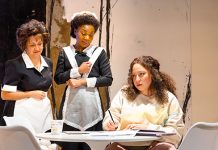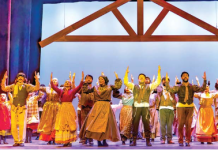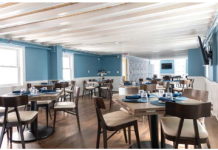By Linda McK.Stewart
Stratford Hall, home of the Lee family of Virginia, is located less than 100 miles from our nation’s capital on the peninsula known as the Northern Neck of Virginia.
Preserved as a working plantation, it stands hard on the banks of the Potomac River, looking much as it did 300 years ago. Like Monticello, Thomas Jefferson’s homestead, Stratford Hall is open to the public and is every bit as fascinating as Monticello. Every year half-million visitors troop through Monticello but fewer than half as many find their way to Stratford Hall.

It was built by Thomas Lee, a third generation Virginian. He was the father of Richard Henry Lee and Francis Lightfoot Lee, the only brothers to sign the Declaration of Independence and the grandfather of Robert E. Lee, leader of the Confederate forces during the Civil War.
In the 1730s, riding high on his tobacco earnings, Thomas Lee bought 30,000 acres and gradually expanded to 90,000 acres of rich, riverfront cropland. There he built his family’s handsome red brick homestead, using material exclusively from the immediate surroundings. The bricks were formed from red Virginia clay and fired on site. The mortar was composed of Potomac oyster shells; the massive timbers of the house were cut from the surrounding forests. The two-story H-shaped house stands in the center of a square clearing with small brick out-buildings – or dependencies as they were called – at each of the square’s four corners. Eight brick chimneys rise through the interior of the house thus conferring the wintertime luxury of central heating.
Thomas Lee enjoyed the prestigious position of royal tax collector with the responsibility of collecting fees in the king’s name, from every vessel – inbound or outbound – sailing past his lawn. Thomas Lee also outfitted ships with such necessities as tar, rope, hardware and sails, a most lucrative supplement to his export of tobacco, cotton and other foodstuffs. In swelling the coffers of His Majesty George II, Thomas Lee profited in many ways, large and small, a fine example of a colonial win-win situation.
Residents of early Colonial Virginia knew no such conveniences as shops or stores. Every item used at Stratford Hall had to be produced on the plantation itself. A gristmill, a full dairy and workshops of all kinds were all plantation-run. Clothing, shoes, boots, saddles, tools, household furnishings were all made “at home.” Imports from France and England were very expensive and confined largely to such luxury items as wines, books, fine textiles. To keep the Lee family well fed, clothed, housed and prosperous required more than 400 slaves. Of the original slave quarters, several cabins have been preserved.
Visitors enter Stratford Hall by the exterior stone staircase that opens onto the second floor. Although five bedrooms are on the floor below, the room long known as Mother’s Room and the adjoining nursery are here on the second floor. The two Lee brothers, Richard Henry and Francis Lightfoot Lee, 1776 signers of the Declaration of Independence, were both born in this spacious sunny room. And 75 years later Robert Edward Lee, Virginia’s closest approximation to a patron saint was also born here. His cradle, lovingly preserved, stands in the center of the room.
In the dining room the table is formally set in lovely oriental Lowestoft, Georgian silver and crystal stemware. Not to be missed is the dining room portrait of a young man, pensive and regal. It is a young George III, probably painted before he ascended the throne. A small anteroom adjoins the dining room, ideal for after-dinner brandy, cigars and gentlemen-only storytelling.
The heart of the mansion is the ballroom with its 17-foot ceiling, handsome chandelier lit by tapers and windows opening onto unimpeded views of the Potomac River. The highly polished floor is laid in tongue and groove with nary a nailhead to catch a silken slipper. Dancing in such plantations as Stratford Hall was gloriously popular with all ages and lavish balls were a regular feature throughout the year. In one corner a spinet and a harp await the touch of the evening’s musicians.

collection of predominantly 18th-century American and English decorative arts.
Halfway between the house and the river is an ancient water-powered mill. Twice a month a dam is opened on an adjoining millrace and the massive old stone wheel groans into revolution, grinding local wheat and corn exactly as it did in the 1700s. The stables house a splendid collection of beautifully restored carts, carriages and coaches.
For the convenience of visitors, a very pleasant café, just down the driveway from the homestead, serves a “Plantation Lunch” that features such local specialties as beaten biscuits, Virginia ham, crabcakes and fried chicken.
Stratford Hall is maintained and operated by the Robert E. Lee Memorial Association, a private, nonprofit organization. It’s a scant two-hour drive from the nation’s capital to the ancestral home of the Lee family.
Historian David McCullough calls us a “nation of historical illiterates.” I can’t think of a better way to refute Mr. McCullough’s charge than by spending all of a lazy September day exploring the house and grounds of Stratford Hall.
IF YOU GO: For directions using GPS or online mapping, use the address: 483 Great House Road, Montross, VA 22520. For additional information call 804-493-8038.














